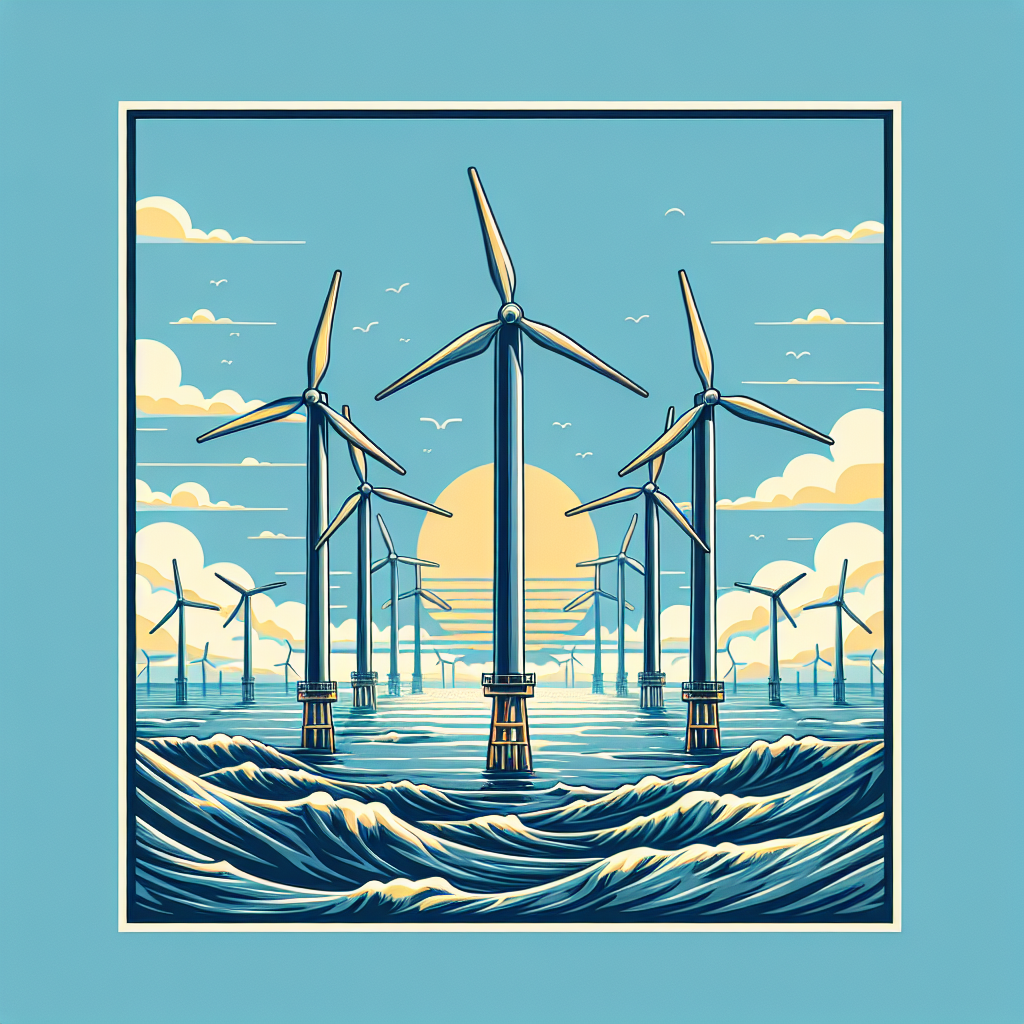Renewable energy is at the forefront of the global effort to mitigate climate change, and wind energy is leading the charge. Among the various sources of wind energy, offshore wind farms are becoming increasingly prominent. In this article, we’ll explore the potential of offshore wind energy, discussing its benefits, challenges, and future prospects.
What is Offshore Wind Energy?
Offshore wind energy refers to the use of wind turbines located in ocean or sea waters to generate electricity. These wind farms harness the stronger and more consistent winds found over the sea compared to those on land. As technology advances, offshore wind farms are being positioned farther from coastlines and becoming more efficient at converting wind into energy.
The Advantages of Offshore Wind Farms
1. High Energy Yield
Offshore wind farms can generate significantly more energy than their onshore counterparts. The average wind speeds are higher over the ocean, creating a more efficient energy generation process.
2. Minimal Land Use
One of the notable advantages of offshore wind farms is their minimal impact on land use. With the growing demands for land for agriculture, housing, and other purposes, offshore wind turbines utilize the ocean’s vastness, reducing competition for land resources.
3. Job Creation
The development and maintenance of offshore wind farms create numerous job opportunities. These include roles in manufacturing, installation, operation, and maintenance, contributing to economic growth.
4. Environmental Benefits
Using offshore wind energy significantly reduces greenhouse gas emissions. Unlike fossil fuel-based energy sources, wind energy is clean and sustainable, making it a crucial player in combating climate change.
5. Energy Independence
Investing in offshore wind energy can help countries achieve energy independence. By harnessing local wind resources, nations can reduce their reliance on imported fossil fuels.
Challenges Faced by Offshore Wind Farms
1. High Initial Costs
While the long-term benefits of offshore wind farms are substantial, the initial investment required is quite high. This includes costs for construction, installation, and maintenance, which can be a barrier for some investors.
2. Technological Challenges
The remote location of offshore wind farms poses unique technological challenges, including the need for specialized vessels for installation and upkeep. Additionally, the harsh marine environment can lead to accelerated wear and tear on equipment.
3. Environmental Concerns
The impact on marine ecosystems can also be a concern. Careful planning and environmental assessments are crucial to ensure that offshore wind farms do not negatively affect marine life and habitats.
4. Logistics and Accessibility
Transporting materials and personnel to remote offshore sites can be logistically complicated. Ensuring the infrastructure is in place to support these operations is essential for the success of offshore wind projects.
Technological Innovations in Offshore Wind Energy
Innovation is driving the growth of offshore wind energy. New turbine designs, floating platform technology, and improved materials are all contributing to increased efficiency and lower costs. For instance, floating wind turbines open up previously unreachable areas of the ocean, expanding the potential for wind energy generation.
Global Trends in Offshore Wind Energy
Countries around the world are increasingly recognizing the potential of offshore wind energy. The United States, Europe, and parts of Asia are investing heavily in this sector. For example, Europe leads the world in installed offshore wind capacity, with countries like Denmark, Germany, and the UK taking significant steps to expand their offshore wind infrastructure.
United States
The U.S. is currently experiencing a boom in offshore wind energy projects. Initiatives such as the “Ocean Wind” project aim to power millions of homes while creating thousands of jobs. The U.S. government is also actively supporting policies that favor the development of this sector.
China
China is another dominant player, with aggressive investments in offshore wind farms. The country has the largest installed offshore wind capacity in the world and continues to expand its reach by investing in technology and infrastructure.
The Future of Offshore Wind Energy
The future of offshore wind energy looks promising. As technology continues to advance and public awareness of climate issues grows, we can expect a surge in investments and projects within this sector. Governments worldwide are positioning themselves to meet renewable energy goals, making offshore wind a pivotal part of the energy equation.
Conclusion
Offshore wind energy has the potential to revolutionize the way we think about renewable energy. With its numerous advantages, including high energy yield and minimal land use, it stands as a formidable contender in the fight against climate change. However, challenges such as high initial costs and environmental concerns must be navigated effectively. As technology advances and more projects are developed, offshore wind farms could play a crucial role in achieving a sustainable energy future.
FAQs about Offshore Wind Energy
1. What is the main advantage of offshore wind farms compared to onshore ones?
The main advantage of offshore wind farms is their ability to generate more energy due to higher and more consistent wind speeds over the ocean.
2. Are offshore wind farms harmful to marine life?
While offshore wind farms can have impacts on marine ecosystems, careful planning and assessments can help minimize these effects.
3. What are the challenges in developing offshore wind farms?
Challenges include high initial costs, technological issues, environmental concerns, and logistical complexities in accessing remote sites.
4. How does offshore wind energy contribute to energy independence?
By leveraging local wind resources, countries can reduce their dependence on imported fossil fuels, enhancing energy security.
5. What technological advancements are aiding offshore wind farms?
Recent advancements include new turbine designs, floating platforms, and improved materials that enhance efficiency and reduce costs.





